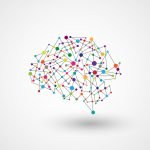Relational Medicine: Perception, Epigenetics, & the Vis – Part 1
Allison Creech, MED, ND
Vis Medicatrix Naturae
A fundamental focus in naturopathy is to support the Vis Medicatrix Naturae and to help remove whatever obstructs its harmonious flow. When the Vis energy is in a state of congruence, meridian pathways will move in a healthy and dynamic rhythm, and physiologic set-points will reflect a healthy biochemistry. Neuroendocrine signals will promote growth and optimal functioning. Epigenetic influences will activate to promote cellular adaptation within an optimal environment, and life force will radiate freely through every system. Emotional flexibility, cognitive kindness, and a secure sense of self are able to manifest. In other words, when the Vis is in congruence, a human being will thrive.
The science of epigenetics has clarified the creative power we have as individuals for creating wellness in our lives. With awareness and intent, we can actively mediate the environmental, nutritional, and perceptual signals that play a role in cellular physiology and systemic organization. These signals cue the body and tell it what is necessary for adaptation. The body is intrinsically resilient and is designed to adapt to the environment in which it finds itself. This is true not only in terms of adaptation to an external environment, but also – and perhaps even more so – in terms of our internal environment. Our experience matters, and the way we perceive our experience has a significant influence on health. This is true on a cellular level and it is true for us as human beings.
Perception as a Determinant of Health
So, where do our pathways for wellness become distorted? How do obstacles that obstruct or distort the Vis arise? The conventional answer in most medical circles, and for many decades, has of course been genetics. However, this story is now being rewritten with a relational understanding of biology, and scientists from multiple disciplines are explaining how different facets of an interconnected being express themselves. As our understanding of the mind-body continuum evolves, our perceived experience of self, life, and relationships takes on new significance. Daniel Siegel, MD, founder of the emerging discipline of interpersonal neurobiology, has spent decades exploring questions related to brain and mind, including how both can change as we influence one another. In his words:
Interpersonal neurobiology isn’t a form of therapy, but a form of integrating a range of scientific research into a picture of the nature of human reality. … For a person to change, the mind must change. We now know “mind” is coming both from interpersonal processes and from brain structure or neurobiology. … Everything we experience, memory or emotion or thought, is part of a process. … Relationships, mind and brain aren’t different domains of reality—they are each about energy and information flow…
Interpersonal relationships that are attuned promote the growth of integrative fibers in the brain. It is these regulatory fibers that enable the embodied brain to function well and for the mind to have a deep sense of coherence and well-being. Such a state also creates the possibility of a sense of being connected to a larger world. The natural outcome of integration is compassion, kindness, and resilience. … Integration is the fundamental mechanism of self-regulation…
So we can define mental health as the ability to monitor ourselves and modify our states so that we integrate our lives. Then things that appeared unchangeable can actually be changed. … We can then use the focus of our attention to integrate both our brain and our relationships. Ultimately we can learn to be open in an authentic way to others, and to ourselves.
(Daniel Siegel, MD)1
In their 2012 article,2 Shonkoff et al also called for an evolution of our understanding of health and illness across the lifespan, explaining that “advances in fields of inquiry as diverse as neuroscience, molecular biology, genomics, developmental psychology, epidemiology, sociology, and economics are catalyzing an important paradigm shift.” They go on to present an “ecobiodevelopmental framework” that shows “how early experiences and environmental influences can leave a lasting signature on the genetic predispositions that affect emerging brain architecture and long-term health.”
In this view of wellness, relational experiences are recognized as powerful determinants of health and as either an expression of fluid Vis energy or of rigidity and constraint. The interpersonal domain is particularly important in early life, as our experience establishes both neural circuitry and perceptual filters, or templates, by which we will evaluate all subsequent experience. Held outside of conscious awareness, these foundations of perception invisibly shape our experience of self, other, and experience in the world for the rest of our lives. We learn to perceive ourselves and the world around us through our relationships, and those perceptions are then translated as both a psychological and biological reality. We are working here with the concept of perception as a primary determinant of health, and an understanding that our relationships are significant in the way our perceptual templates for life are formed. We will explore this concept in different expressions – psychologic, physiologic, and epigenetic – and doing so will help to develop an integrated biopsychosocial understanding of medicine where mind and body, genes, and environment, all engage in a dynamic flow of information and energy that guides our development as humans.
Perceptual Templates
The structures that organize our perception emerge through our experience within a biopsychosocial context of development. Our first perceptual templates are created long before we have the cognitive or verbal capacity to describe our experience. Instead, they are wired in neurologically and programmed into physiology according to our lived, sensory experience. They are visceral. They are also invisible for most people, as they simply create the filters by which we experience the world. We don’t recognize their presence or their influence because they are so fundamental to our experiential organization.
One of the first perceptual structures to organize around our experience in life has to do with feeling safe. When our experience is fundamentally one of safety, a neuroendocrine message for growth and ease is sent through the body. Dopamine, oxytocin, vasopressin, growth hormone, and other chemical messengers of well-being are communicated throughout the body. As mind-body templates are created at the first level of perceptual organization, that sense of safety is embedded in both psychology and physiology. Vis energy is promoted, and patterns that promote resilience define homeostasis. On the other hand, when our experience is characterized by prolonged states of fear and distress, we see a shut-down of growth and repair mechanisms, and the body closes off into a state of protection. Again, the cascade of neurohormone signals confirms this as biological reality, specifically flooding the body with cortisol, norepinephrine, cytokines, histamines, and other inflammatory agents. The experience of distress will be the primary influence on templates at the first level of perceptual organization, and will function as set-points for subsequent development.
Secure Attachment
In early life, the distress-safety cycle is mediated by our interactions with loving caregivers. Cortisol, released in any situation where an infant has needs that are unmet, almost instantly subsides when the child receives physical care and loving connection. In that state of connection, children learn that they are safe, that their needs are valid and will be met, and that others are reliable. This is the foundation of secure attachment and a perceptual experience of “I am safe.” As explained by Jack Shonkoff, MD, founder of the Center on the Developing Child at Harvard University, our relationships are the single most important factor in determining the basic direction of development: loving adult support provides a buffer, which protects the child from toxic stress and prevents it from negatively impacting their developing brain, with long-term consequences for “learning, behaviour, and both physical health and mental health.”3
In essence, the first relationship we experience creates a perceptual filter that defines our sense of safety and of trust in connection with self and others. With loving and responsive attention, mind-body set-points are established that promote wellness and resilience throughout life. Renowned psychologist Erik Erikson described this phenomenon in his classic work on the stages of psychosocial development across the lifespan, in which he described the patterning that develops around the theme of trust vs mistrust in an infant’s first year of life.4 This pattern is generally maintained across time as a hidden engineer of perception and experience. Other psychologists have also studied the impact of early relationships, particularly with regards to our experience of safety in the world. In their seminal work on attachment, John Bowlby and Mary Ainsworth began an active study into the nature of the mother-child relationship and its impact on the child’s psychological development.5 Their research spanned decades and evolved into a theory of attachment that linked a child’s cognitive, emotional, and social adaptation with maternal sensitivity and responsive care. Bowlby also noted attachment as an engagement system that reduced stress and promoted safety for the infant.5
Childhood Trauma
Expanding a biopsychosocial understanding of health over the lifespan, modern researchers have documented the relationship between the experience of a lack of safety in childhood and specific health outcomes as adults. The definitive Adverse Childhood Experiences (ACE) study, published as a collaboration between Kaiser Permanente and the CDC in 1998,6 examined the impact of a set of “adverse childhood events,” including divorce, parental substance abuse, physical/sexual/emotional abuse, domestic violence, parental mental illness or incarceration, and physical neglect or emotional neglect. They found that the more exposure children had to these events, the more likely they were to experience negative health outcomes as adults, including ischemic heart disease, cancer, chronic lung disease, skeletal fractures, and liver disease. They were also more likely to have poor health habits, attempt suicide, and be diagnosed with depression.7
Interestingly, the correlations between ACE and medical outcomes exist even when controlling for poor health behaviors, and in fact demonstrate how trauma changes the brain such that poor health habits are more likely as a person attempts to cope with their experience.8 This and other literature that has begun to delve into the impact of childhood trauma is moving towards a “developmental origins of health and disease hypothesis,” which suggests that “increased susceptibility to disease following early life experiences is shaped by epigenetic modifications such as DNA methylation and chromatin modifications.”9,10 So, again, we see a dynamic interplay between lived experience, brain structure, perceptual templates of mind, and epigenetic/cellular regulation. These are powerful determinants of health that go largely unidentified and unrecognized as a place where we have agency.
Am I Safe? Attachment as a Foundation of Perception
Attachment is most simply defined as the quality of security and responsiveness that an infant experiences in relationship with its primary caregiver during the first year of life. That relationship shapes the development of our mental systems, both in terms of brain structure and an organized set of perceptions (“mind”). If an infant experiences consistent loving and attentive care, cycles of stress and soothing emerge that instill a state of trust, connection, and safety. This experience is wired-in both physically and psychologically, and begins to shape the perceptual filters of experience. A child also learns to self-soothe based on the quality of engagement they receive in the first years of life, thereby establishing an internal regulatory system that will mediate emotions, offset stress, and buffer the effects of cortisol throughout the lifespan. Thus, a secure experience within our first relationship fosters a sense of trust and a psychological sense of well-being, plus builds a favorable stress response system and supports healthy brain development. This template will organize all subsequent experience.
As described by the Harvard’s Center on the Developing Child11:
“The architecture of the brain is constructed through an ongoing process that begins before birth, continues into adulthood, and establishes either a sturdy or fragile foundation for all the health, learning, and behavior that follow. … The interaction between genes and experiences literally shapes the circuitry of the developing brain and is critically influenced by the mutual responsiveness of adult-child relationships, particularly in the early childhood years.”
Through its influence on unconscious patterns of organization and perception, our relational experience in early childhood exerts its influence throughout the lifespan and is significant in determining all levels of health.
In Part 1, we have set a foundation for relational medicine and built an appreciation for how perception in general, and attachment in specific, are powerful determinants of biopsychosocial wellness. In Part 2 of this article, we will delve more deeply into the perceptual and epigenetic correlates of our relational experiences in early life, and look more closely at some of the effects that they have in our adult lives. We will also return to the concept of relational medicine and better understand how we can support the Vis through engaged and responsive patient care.
References:
- Patty deLlosa. The Neurobiology of “We.” Parabola. Summer 2011:68-75. Available at: http://www.drdansiegel.com/uploads/The%20Neurobiology%20of%20We%20-%20Patty%20de%20Llosa.pdf. Accessed March 15, 2018.
- Shonkoff JP, Garner AS, Committee on Psychosocial Aspects of Child and Family Health, et al. The Lifelong Effects of Early Childhood Adversity and Toxic Stress. Pediatrics. 2012;129(1):e232-e246.
- Toxic Stress Derails Healthy Development. [Video]. Center for the Developing Child. Harvard University. Available at: https://developingchild.harvard.edu/resources/toxic-stress-derails-healthy-development. Accessed March 10, 2018.
- McLeod S. Erik Erikson. Updated 2017. Simply Psychology Web site. https://www.simplypsychology.org/Erik-Erikson.html. Accessed March 15, 2018.
- Bretherton I. The Origins of Attachment Theory: John Bowlby and Mary Ainsworth. Dev Psychol. 1992;28(5):759-775.
- Felitti VJ, Anda RF, Nordenberg D, et al. Relationship of childhood abuse and household dysfunction to many of the leading causes of death in adults. The Adverse Childhood Experiences (ACE) Study. Am J Prev Med. 1998;14(4):245-258.
- Centers for Disease Control and Prevention. About the Kaiser-CDC ACE Study. Last updated June 14, 2016. CDC Web site. https://www.cdc.gov/violenceprevention/acestudy/about.html. Accessed March 15, 2018.
- Burke Harris N. How childhood trauma affects heath across the lifetime. [Video]. September 2014. TEDMed. Available at: https://www.ted.com/talks/nadine_burke_harris_how_childhood_trauma_affects_health_across_a_lifetime. Accessed March 16, 2018.
- Barker DJ. The developmental origins of adult disease.J Am Coll Nutr. 2004;23(6 Suppl):588S-595S.
- Gabory A, Attig L, Junien C. Developmental programming and epigenetics.Am J Clin Nutr. 2011;94(6 Suppl):1943S-1952S.
- Shonkoff JP, Richter L, van der Gaag J, Bhutta ZA. An integrated scientific framework for child survival and early childhood development. Pediatrics. 2012;129(2):e460-e472.
Copyright: <a href=’https://www.123rf.com/profile_lenanet’>lenanet / 123RF Stock Photo</a>
 Allison Creech, MEd, ND, is a naturopathic doctor who splits her time between seeing patients in private practice, teaching courses in Health Psychology at the Canadian College of Naturopathic Medicine (CCNM), and mothering her young son. She has a passion for mind-body medicine and deep consciousness work, where it is possible to engage and amplify the healing power of the Vis. She has a special interest in supporting women with pregnancy and also in helping people to activate their creative potential. Dr Creech graduated from CCNM in 2004 after pursuing graduate studies in clinical psychology. She can be reached online at www.alightalive.com.
Allison Creech, MEd, ND, is a naturopathic doctor who splits her time between seeing patients in private practice, teaching courses in Health Psychology at the Canadian College of Naturopathic Medicine (CCNM), and mothering her young son. She has a passion for mind-body medicine and deep consciousness work, where it is possible to engage and amplify the healing power of the Vis. She has a special interest in supporting women with pregnancy and also in helping people to activate their creative potential. Dr Creech graduated from CCNM in 2004 after pursuing graduate studies in clinical psychology. She can be reached online at www.alightalive.com.










